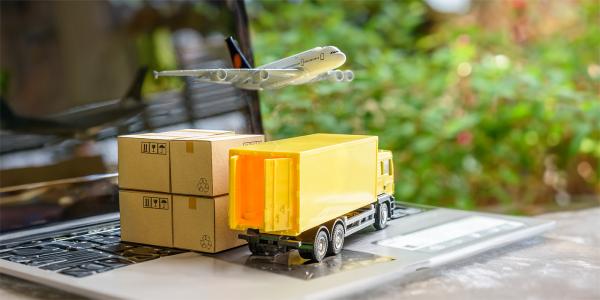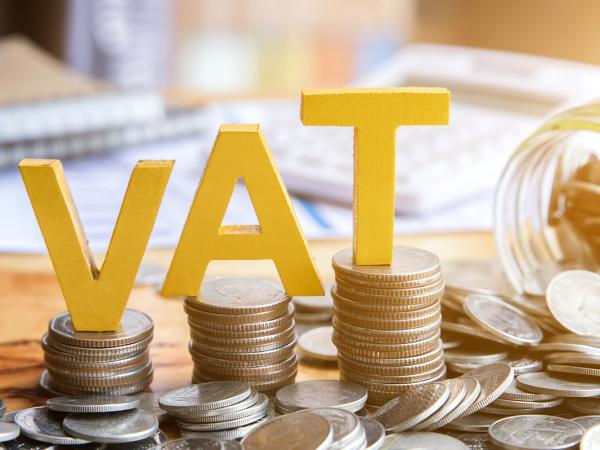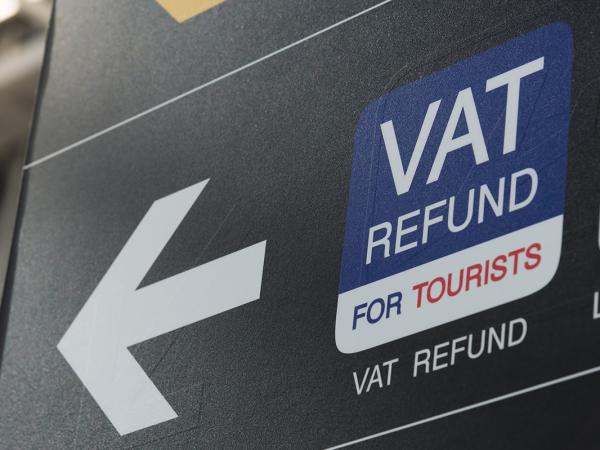Buying goods from overseas
When you buy goods online from overseas, you may find that you have to pay additional charges and taxes, on top of the cost of the goods. Typically, you may have to pay value added tax (VAT) and customs duty. You may also have to pay excise duty.
Note that the rules are slightly different for people living in Northern Ireland.

Content on this page:
Buying goods online from overseas
Items you buy online from overseas, including from within the European Union (EU), may be more expensive. This is because you generally face additional charges over and above the cost of the item and the postage or packaging fee.
Note that before 1 January 2021, if you bought goods online from within the EU, then there were typically no additional charges over and above the cost of the item and any postage/packaging fee.
If you were buying goods online from outside the EU, including countries such as China and the USA, then you may have faced additional charges including import customs duties and VAT. However, there was an exception on low value goods.
For goods arriving in the UK on or after 1 January 2021, the rules have changed, especially in respect of goods from EU countries. This is because of the UK leaving the EU.
Now, whenever you are ordering items which are sent from outside the UK, you may have to pay some or all or the following after you have paid for your order, even if the website offers free shipping or appears to be based in the UK (as the order may actually be fulfilled from overseas):
- Customs duty
- Excise duty
- Import VAT
- Handling or processing fees.
It is important to check for additional costs so that you can work out exactly how much goods will cost and make an informed decision about whether to go ahead with your purchase.
Customs duty, excise duty and import VAT
These are essentially taxes on the value of goods. The idea of these taxes is to bring the cost of imported goods up to the same cost as those produced within the UK to keep competition fair.
Customs duty
You may need to pay customs duty on certain goods sent from outside the UK if they are either:
- Excise goods (for example, tobacco, alcohol or fragrances), or
- Worth more than £135.
When you are considering if the goods are worth more than £135, you need to consider the amount inclusive of any postage, packaging and insurance.
The rate of duty is variable and depends on the nature of the goods being imported, and where they are being imported from. The rate can be 0%, depending on the circumstances.
The different rates of duty are linked to commodity codes which can be found on GOV.UK. These codes can be confusing, and some are linked to much higher rates than others, so it may be worth contacting HMRC to check the rate.
If the goods qualify as a ‘gift’, and the value of the goods is above £135 but no more than £630, then lower rates can apply. See below under the heading More information.
Excise duty
You need to pay excise duty on alcohol or tobacco that is sent to you from outside the UK. Excise duty applies to alcohol or tobacco whether you have purchased it or received it as a gift.
The different rates can be found on GOV.UK.
Import VAT
The VAT treatment will depend on the type and value of the goods. Gifts are exempt from import VAT if they are worth £39 or less. See below under the heading More information.
For non-gift items and not including tobacco, alcohol and fragrances, a very basic outline of the rules is:
Goods worth up to £135
For goods worth £135 or less in value, sellers located in both EU and non-EU countries (whether online marketplaces or direct sellers) should be responsible for charging and collecting UK VAT on behalf of HMRC. This VAT will be at the applicable rate for the item you are buying, so for example, if you are buying children’s clothes, the VAT rate should be 0% (not the usual 20%). You should also check that an EU supplier has not charged VAT twice i.e. EU VAT from their local country as well as UK VAT (as they are ‘exporting’ there should be no local VAT).
The £135 threshold applies to the overall value of the consignment, not to each individual item within it. The goods will still need customs declarations (often prepared by the seller) and will be subject to normal customs processes and procedures (for example, they may be examined for prohibited or restricted goods).
For non-EU countries, there used to be a VAT exemption on goods worth less than £15, which saved red-tape on low-value items. The removal of the £15 rule means that there will now be VAT to pay on all goods, no matter the cost – for example, an item worth £14.99 will now cost £17.98 (£14.99 plus VAT of £2.99 – assuming a VAT rate of 20% and no other duties or import costs payable).
This change is happening at the same time as the government has shifted the point where VAT is collected on goods worth £135 or less, from the time of importation to the time of supply to the customer. This means many overseas sellers will be forced to register for VAT in the UK (unless they use an online marketplace, which will do this), which could impact on the number of people willing to sell to people in the UK.
Goods worth over £135
For goods exceeding £135, VAT will not be charged by the seller and will be collected at the point of import (this is known as ‘import VAT’ and is charged at the applicable rate). Alternatively, courier firms may collect the amount due on behalf of HMRC and charge you an admin fee for doing so (more on this below).
The import VAT percentage rate is applied to the sterling equivalent of the item value (converted to pounds sterling using the rates of exchange for the month of importation as published by HMRC), plus the cost of transport, postage and packing, insurance and any duty that may be payable. The import VAT rate is usually 20% but as VAT is based on the extras like customs duty too, it can appear higher than 20% of the original sales price.
Calculations and charges
Charges are calculated based on the customs declaration (which should contain a description and value of the goods). The responsibility for the customs declaration will depend on the terms of sale. If you are ordering online, you should check this before placing the order.
Under customs law, you (as the importer) can be legally responsible for the information on the declaration even if it is filled in by the sender. Therefore, it’s in your own interest to make sure, wherever possible, that the sender abroad completes the declaration accurately and in full and that there are no false valuations or misdescriptions.
If no declaration is made, or the information is inaccurate, the package may be delayed while the Border Force make further enquiries, or in some cases the package and its contents may be returned to the sender or seized by the Border Force.
The delivery businesses Royal Mail and Parcelforce will usually ask you to pay the import charges before you can receive your item. A postcard or letter will be delivered to your address, detailing the amount due and the options available for payment. Once payment has been made, the package may be collected from the post office or if you have paid online/by phone you can arrange for it to be delivered. They will normally hold your parcel for about three weeks. If you have not paid the fee by then, it’ll be sent back.
For more detailed information on Royal Mail and Parcelforce processes, check out HMRC’s guidance for international post users on GOV.UK.
If you have any questions about a particular import charge, for example you think it is incorrect or you ended up returning the item, you should contact the Border Force as soon as possible using form BOR286 (if Royal Mail or Parcelforce delivered the goods) or form C285 (if a courier or freight company delivered the goods).
Other costs
You may also have to pay a handling fee to Royal Mail or Parcelforce – often they will have dealt with the customs clearance process and paid the duty and tax charges on your behalf to ensure they can deliver your shipment as quickly as possible. But this incurs an administration fee. This may be set as a percentage of the value of the goods (for example, 2.5%) – but may also be subject to a minimum fee – say £10 or £12. HMRC do not have any authority over the level of charges they apply.
Other operators, such as UPS or FedEx, may deliver your item but send you an invoice for the import charges and their handling fees later – do not rely on them not chasing you though – they are commercial businesses and will want to be paid. You should be able to find more information about different operators’ procedures on their various websites.
More information
Further guidance on changes to the VAT treatment of overseas goods sold to customers from 1 January 2021, can be found on GOV.UK.
There is information on goods that qualify as gifts on GOV.UK.



